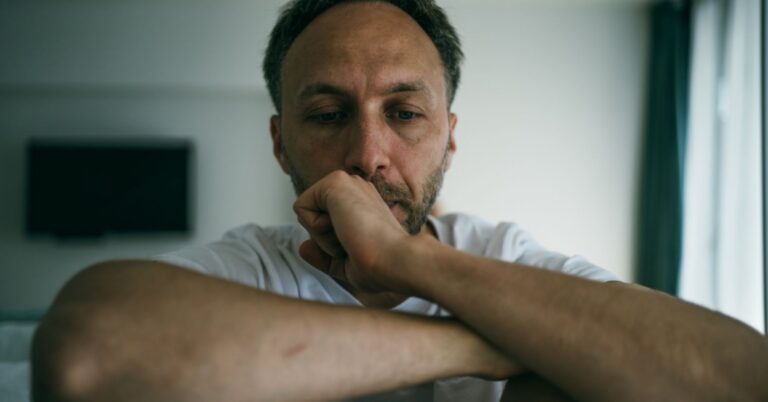Anxiety disorders are the most common mental health concern in children. The rates of children with anxiety have been growing dramatically. In 2021, a meta-analysis (translation: a study that combines data from all previous studies) found that 20.5% of children worldwide have symptoms of anxiety.
How Do You Know if Your Child Has Anxiety?
It is very normal for children to have fears that seem irrational or out of proportion to the danger actually posed (such as being afraid of the dark or worried about their parents leaving). However, most children seem to outgrow these fears with age and/or the fears do not interfere with the child’s ability to make friends, go to school, sleep, or engage in other activities that are important to the child and the family. Parents should be concerned if the fear or anxiety does not seem typical for their age or if it starts to interfere with important activities for your child or important activities for the family.
Children with anxiety may show some of the following symptoms:
- Complaining of stomach or head problems
- Difficulty falling or staying asleep
- Difficulty concentrating
- Seeming overly tired or on edge
- Excessive worrying
- Avoiding certain things or activities
- Irritability or being more prone to anger
It is also important to note that anxiety can look different in children than it does in adults. For children, it is common that anxiety involves physical complaints (stomachache, headache, or being tired or not able to sleep), or looks more like irritability and anger than nervousness. Young children may also not be able to describe their anxious thoughts or even accept that their thoughts are irrational or unreasonable. Older children may know their thoughts are unreasonable but may not be able to control them and still feel anxious.
What Can I Do to Help My Child?
Research finds that parents may play a clear role in helping their child to cope with anxiety. In fact, a recent study found that training parents in effective ways to manage their child’s anxiety was just as effective in reducing anxiety symptoms as direct child therapy.
What can you do to help your anxious child (according to research)?
- Explain what anxiety is and take away the shame: Explain to your child that there is nothing wrong with them and that anxiety itself is not “bad”— anxiety is there to protect them. You can describe their brain as being more likely to have “false alarms,” meaning their brain is telling them there is danger when really they are safe.
- When your child is anxious, avoid any “accommodating behaviors”: Be careful not to provide too much reassurance or help the child to avoid what makes them anxious (these are called “accommodating behaviors” by psychologists). Many well-intentioned parents of anxious children get in the pattern of shielding their child or avoiding anything that might trigger anxiety.
- Validate and empathize with anxiety: At the same time, parents also do not want to ignore or invalidate their child’s anxiety. They should acknowledge that the child’s anxiety is “real” and is difficult for them, even if it seems irrational to the parent. For example: “I can tell that was really scary for you.”
- Encourage children to face their fears: After acknowledging and empathizing with their child’s anxiety, parents should then encourage them to gradually and gently face their fears. Parents should work with their children to take “baby steps” to face their fears. For example: “This really makes you feel nervous but I know you can handle it.”
- Praise any “brave” behavior: When children successfully face their fears or even when they take a “baby step” toward facing their fears, parents should give children a lot of praise and positive attention. When doing this, parents should acknowledge that the child was anxious and that it was very difficult but they did it anyway, rather than invalidating their experience with something like “See, that wasn’t so bad!”
- Help your child learn to tolerate uncertainty: Many children (and adults) with anxiety will try to avoid anxiety by reducing uncertainty in their environment. Help your child to face uncertainty and learn to tolerate uncertainty by gradually exposing them to more uncertainty in their environment.
- Encourage your child’s independence and ability to make choices on their own: Allow your child the freedom to make mistakes, take risks, and even make the “wrong” decision. Research finds that parents who are overly controlling are more likely to have a child with anxiety. Although this parenting practice could reflect the parents’ anxiety themselves, it also makes sense that this behavior may hurt children’s confidence.
When and How Do I Seek Professional Help?
Although parents can certainly help their children to cope with anxiety, it is also important to seek professional help when needed for childhood anxiety.
How do you know if you need to seek help? Parents should seek help for any of the following reasons:
-
Their child’s anxiety seems to be interfering with important functions such as sleep, eating, school, or activities that they used to enjoy.
-
The strategies they are trying to manage their child’s anxiety don’t seem to be helping or are making the anxiety worse.
-
The child has been exposed to a traumatic situation which is causing anxiety.
-
The child’s anxiety seems to be getting worse over time.
If you do think your child needs professional help, ask your pediatrician or school counselor for a referral to a psychologist, doctor, or other mental health professional. Or, to find a therapist, visit the Psychology Today Therapy Directory. After the evaluation, you will be told whether your child meets the criteria for an anxiety disorder and what your treatment options might be.
Therapy and medication are very effective for treating childhood anxiety. In particular, a type of therapy called Cognitive Behavioral Therapy (CBT) helps most children with anxiety show improvement in symptoms. Research also finds that therapy with “in-session exposure” (translation: exposing children to what makes them anxious during the therapy session) may help to improve anxiety symptoms.




















+ There are no comments
Add yours